Funny Cartoon Black an Standing Next to a Boat Speaking With His Friend
1990s nostalgia is everywhere. The decade known for bright colors, grunge music, and Saturday morning cartoons is the subject of nostalgia on television, cinema, and even in fashion. It's often said that these years were among the greatest and most innovative periods in animation, with fondly remembered shows like Teenage Mutant Ninja Turtles, Mighty Morphin Power Rangers, Ren & Stimpy, DuckTales, Batman: The Animated Series, and many more.
Of course, not all animation from the era is so well-remembered. Some were lost to time because they simply weren't very good in the eyes of most. Others were only relevant to a particular time and place, and some deserve more recognition and credit but somehow never seem to get mentioned.
Updated May 11, 2022, by Gabrielle Huston: No one can resist a little nostalgia now and then. We're certainly no exception! We looked over this list of our favorite cartoons from the 90s and made this burst of nostalgia the best that it could be! We hope that we can pull out a long-forgotten memory from deep in your brain for you to enjoy.
30 Courage The Cowardly Dog
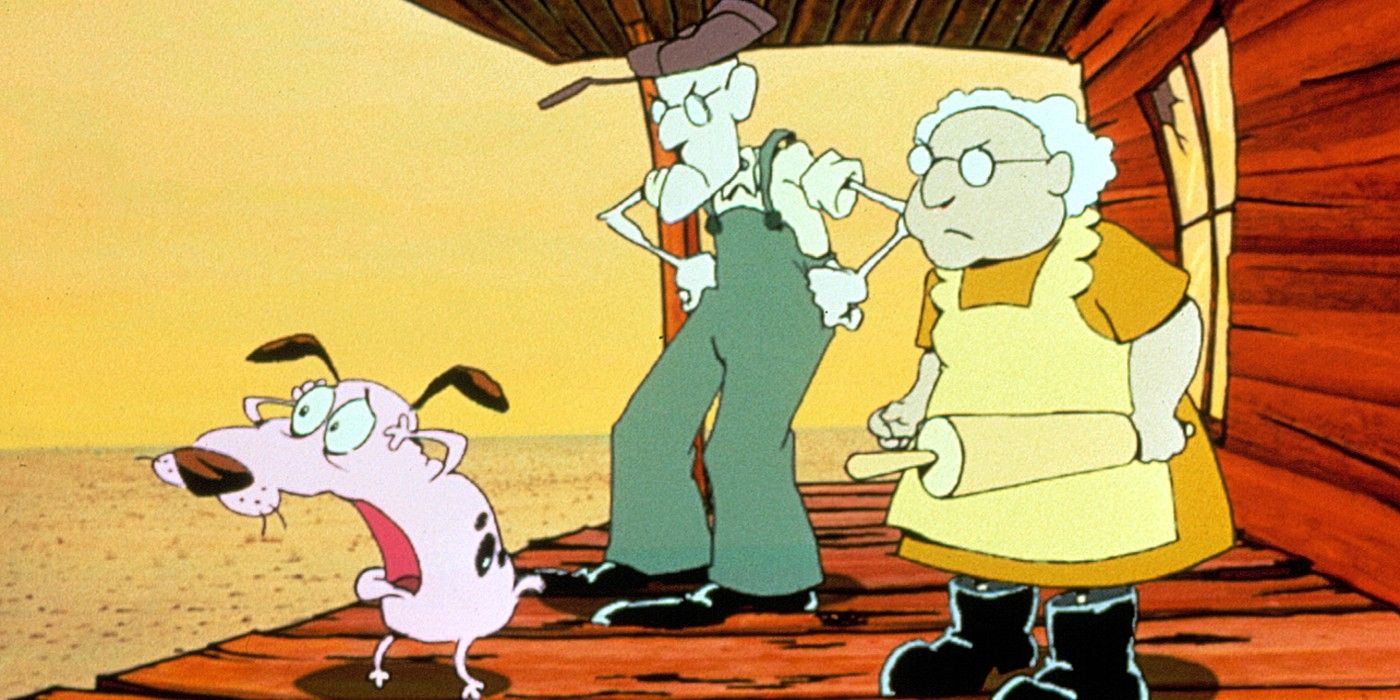
The show Courage The Cowardly Dog revolves around an ironically-named dog who easily manages to get frightened who is taken in by a Scottish couple of a certain age. Cue a slew of wacky antics involving everything from mad scientists and creeping zombies to aliens and monsters.
Though it was released at the tail end of the decade — pun intended — John R. Dilworth's Courage The Cowardly Dog has a prominent 90s vibe with that typical Hanna-Barbera zaniness and charm. It had a decent run after expanding from its origins as a humble animated short, but its run was fairly short-lived, lasting just a few years. It's still remembered today, though, proven by the fact that the intro was recreated in Animal Crossing: New Horizons.
29 The Wild Thornberrys
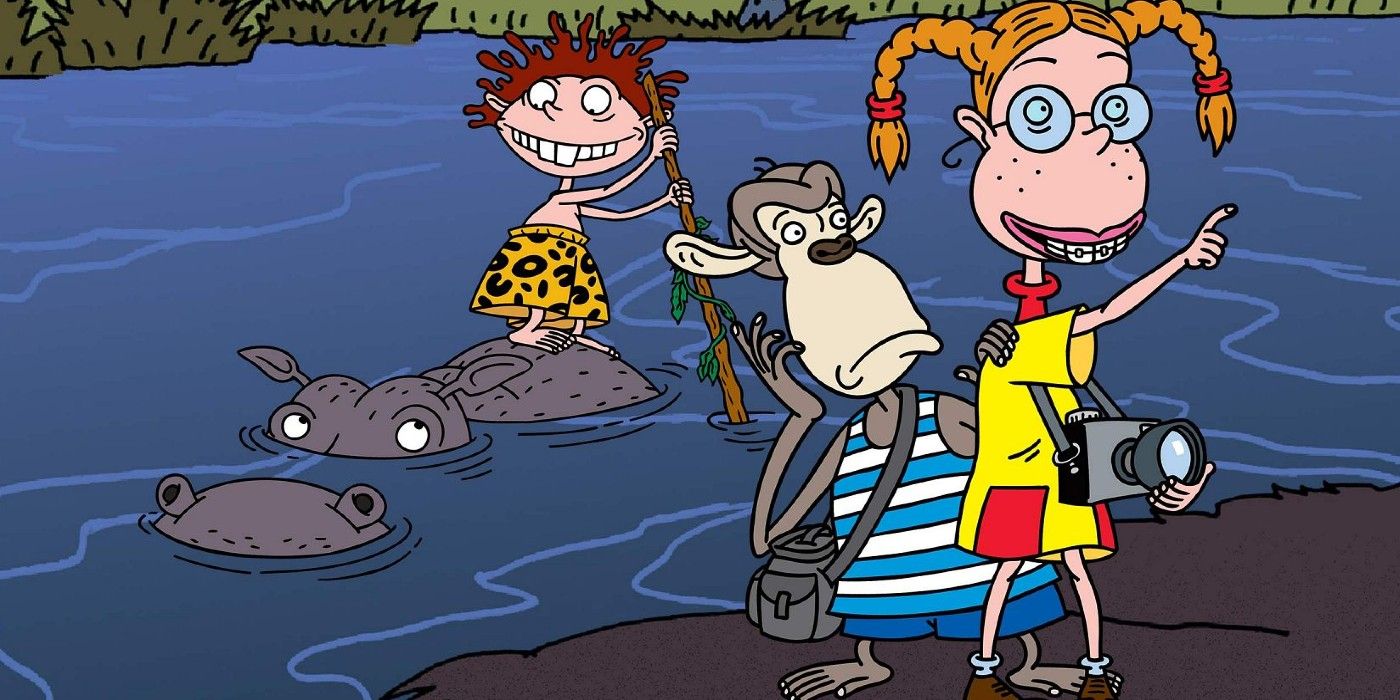
This charming family-oriented cartoon tended to be overshadowed by Nickelodeon's classic Nicktoon lineup that preceded it. These days, most tend to remember the show most for its crossover with the Rugrats in a 2003 theatrical film. Still, there was a time when The Wild Thornberrys had a decent following, largely thanks to its fun premise and fun jungle setting.
The show stars a girl named Eliza Thornberry who gains the power to speak with animals after rescuing a shaman taking the form of a warthog. Throughout this 5-season odyssey in the wilderness, Eliza and her family embark on various adventures in the wild and occasionally get into hijinks whilst filming a documentary. The show was praised for its endearing, imaginative themes as well as its animal-friendly undertones.
28 I Am Weasel
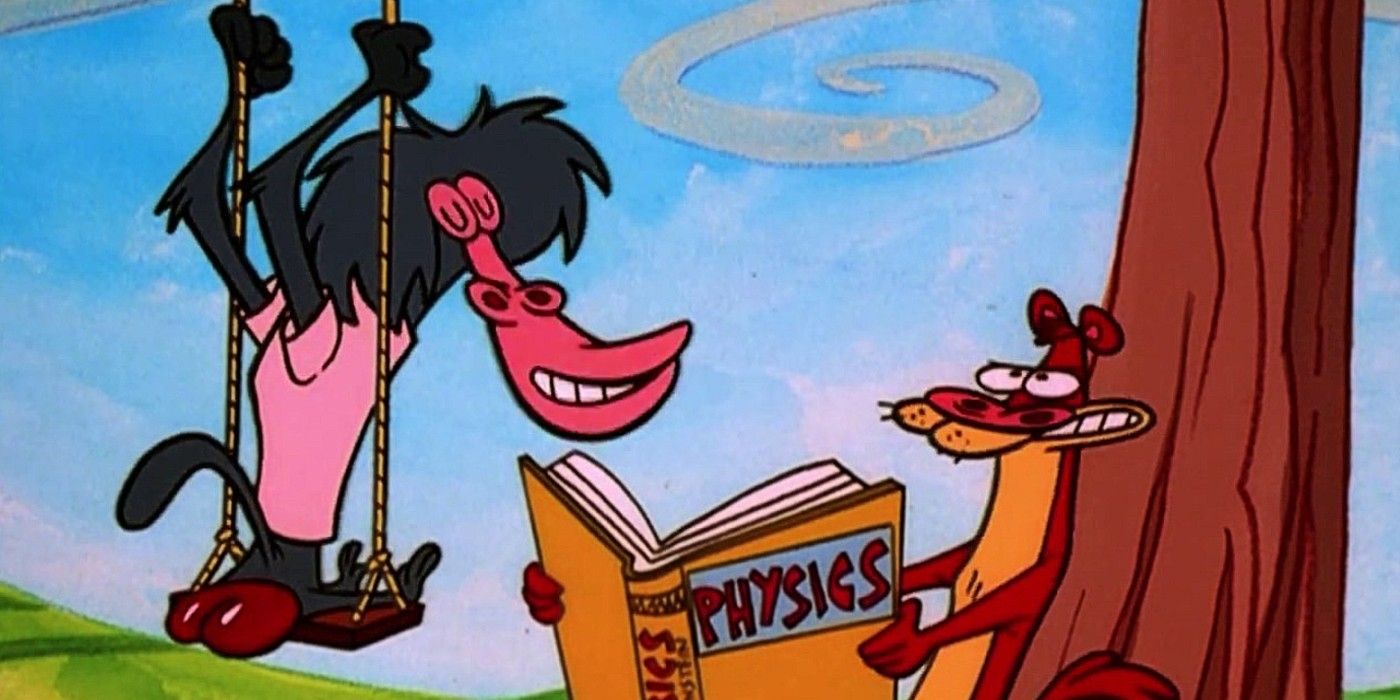
This slapstick animation created by David Feiss is among the first of a string of "Cartoon Cartoons" — seemingly Cartoon Network's answer to Nicktoons. Despite its zany charm, I am Weasel isn't particularly remembered these days. This is largely on account of it being a spinoff from a Cow and Chicken segment; which was itself not terribly popular.
The show highlights the antics of the two animal frenemies fittingly named I.M. Weasel and I.R. Baboon. Like its origin series, I Am Weasel brought a comedic style and dynamic akin to a tamer version of Ren & Stimpy. It features ample back-and-forth banter as Baboon obsessively strives to outdo his more successful, wittier counterpart. At the same time, the show had its own wacky appeal which helped it obtain decent ratings in the late 90s.
27 Dexter's Laboratory
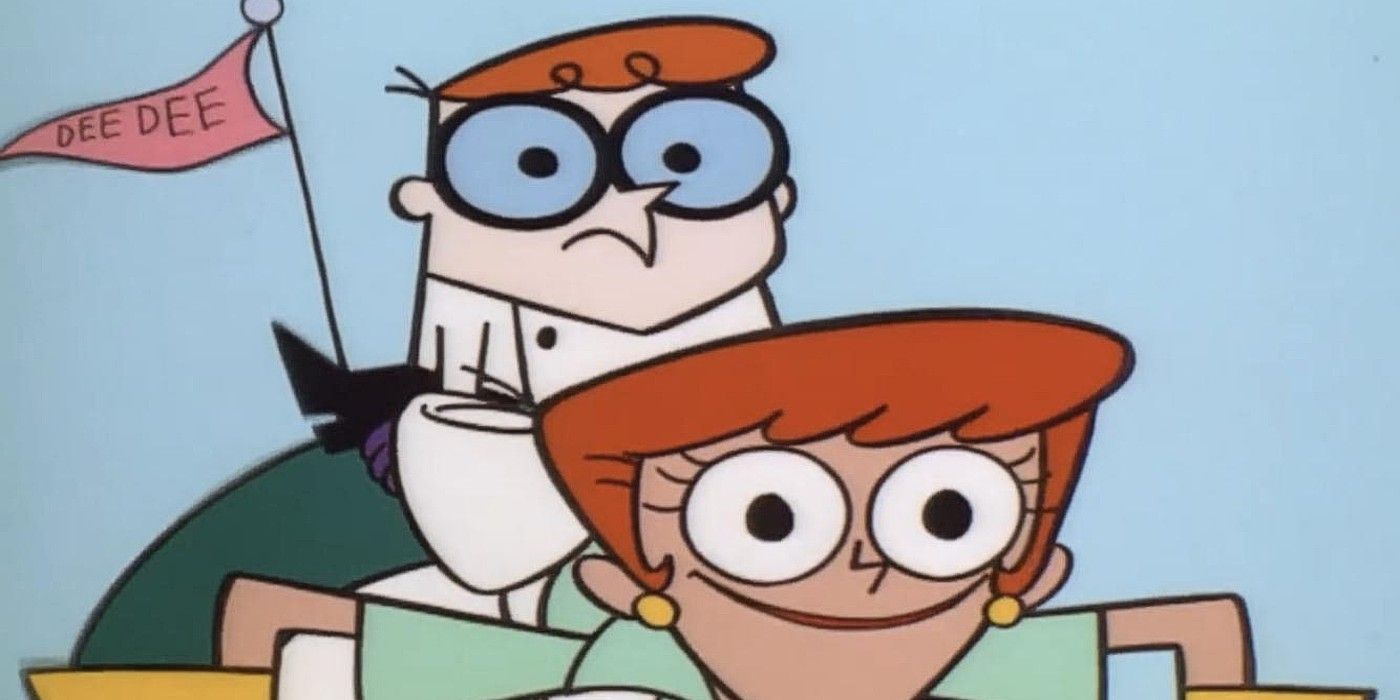
One can liken Dexter's Laboratory to Tom Green — both being highly popular in the late 90s and early 2000s before largely falling off the radar for most. But, like Green, Dexter's Laboratory holds an appeal and comedic edge which remains innovative and culturally significant over two decades later.
This Hanna-Barbera show features the uptight boy-genius by the name of Dexter, who speaks with a curiously unidentifiable accent. Much of the series has him playing off his wacky, hyperactive sister Dee Dee, who has a knack for wreaking havoc in his lab and setting him back with his inventions.
26 The Pirates Of Dark Water
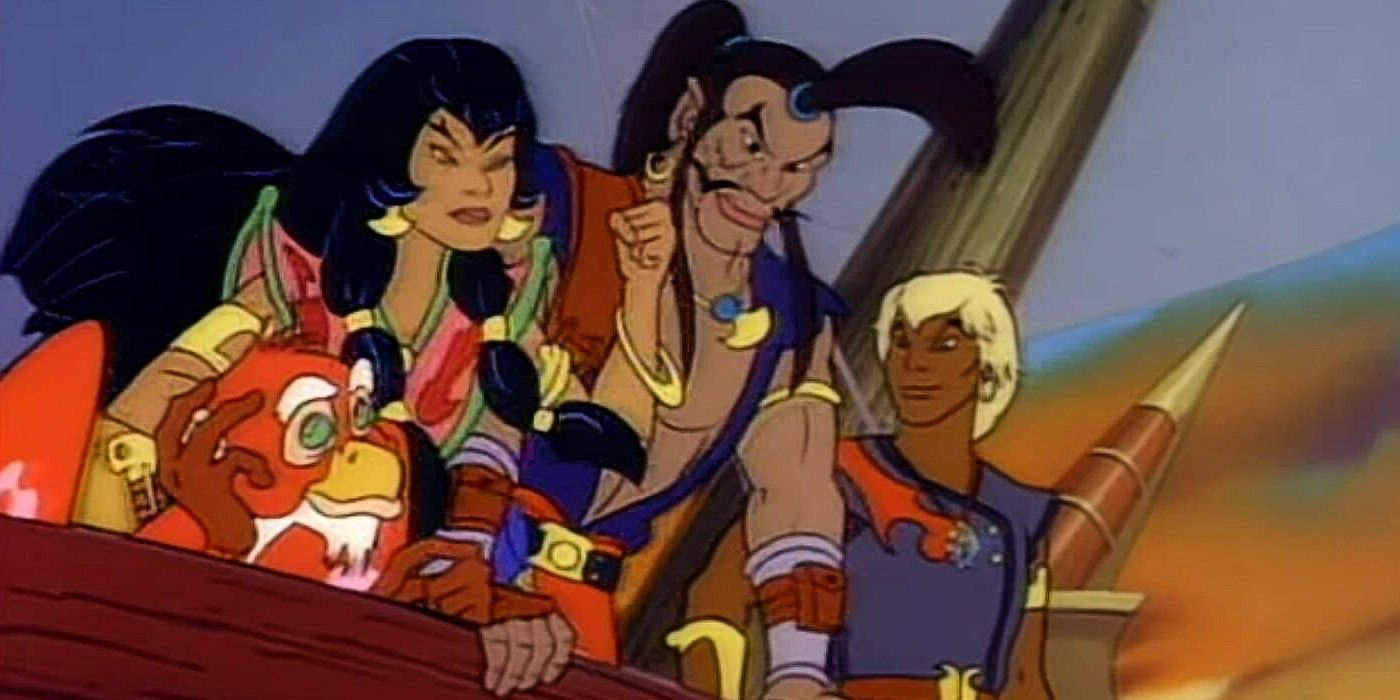
This obscure cartoon first aired in 1991 as a five-part miniseries titled Dark Water, which was turned into a full series. The short-lived fantasy had one of the most original premises of the era, portraying an alien oceanic world being destroyed by an evil substance called Dark Water. Ren and his crew try to stop it by gathering the lost Thirteen Treasures of Rule and battle pirate lords along the way.
The Pirates of Dark Waterwas well-written, had fleshed-out characters, a compelling story, and a creative setting. Unfortunately, it ended after two seasons and 21 episodes before the pirates could collect all 13 treasures (only eight were found by the final episode). Sadly, few seem to remember the show, though it spawned a video game and a toy line. A small dedicated fanbase still calls for a remake.
25 Swat Kats: The Radical Squadron
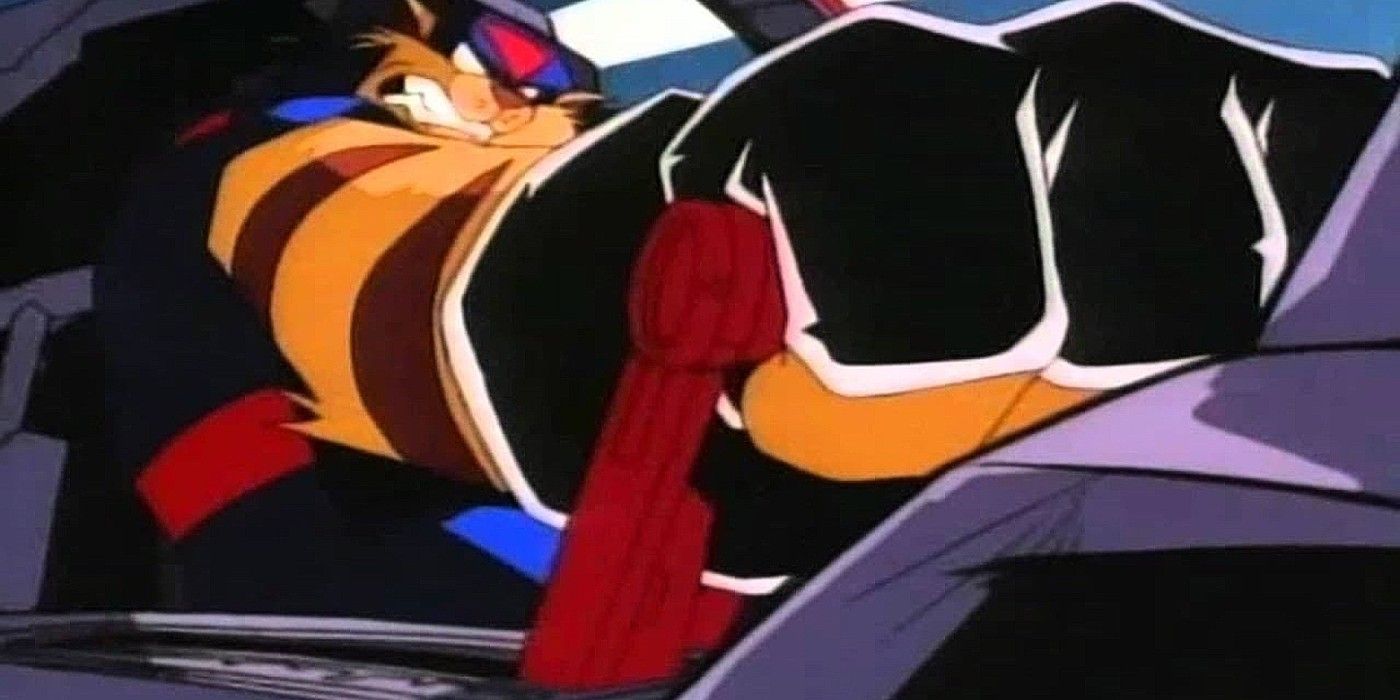
SWAT Kats: The Radical Squadron was another Hanna-Barbera production featuring two anthropomorphic feline vigilante pilots who use their advanced fighter jet, the Turbokat, to defend Megakat City from villains and monsters, while also clashing with the city's law enforcement. On paper, it may sound odd but, in practice, it was refreshing, exciting, futuristic, and boasted a bright but gritty aesthetic and good balance of action and humor.
SWAT Kats could have been the next big thing in the mid-'90s. It was the number one syndicated show of 1994, and its high ratings spawned a toy line and a video game. Unfortunately, it was cancelled near the end of its second season with three unfinished episodes. This is reportedly because TBS owner Ted Turner decided he didn't like the level of violence on the show, and caused a delay in the release of merchandise, resulting in disappointing sales and the show's eventual death. In 2015, the show's creators launched a successful Kickstarter to revive SWAT Kats.
24 Beetlejuice
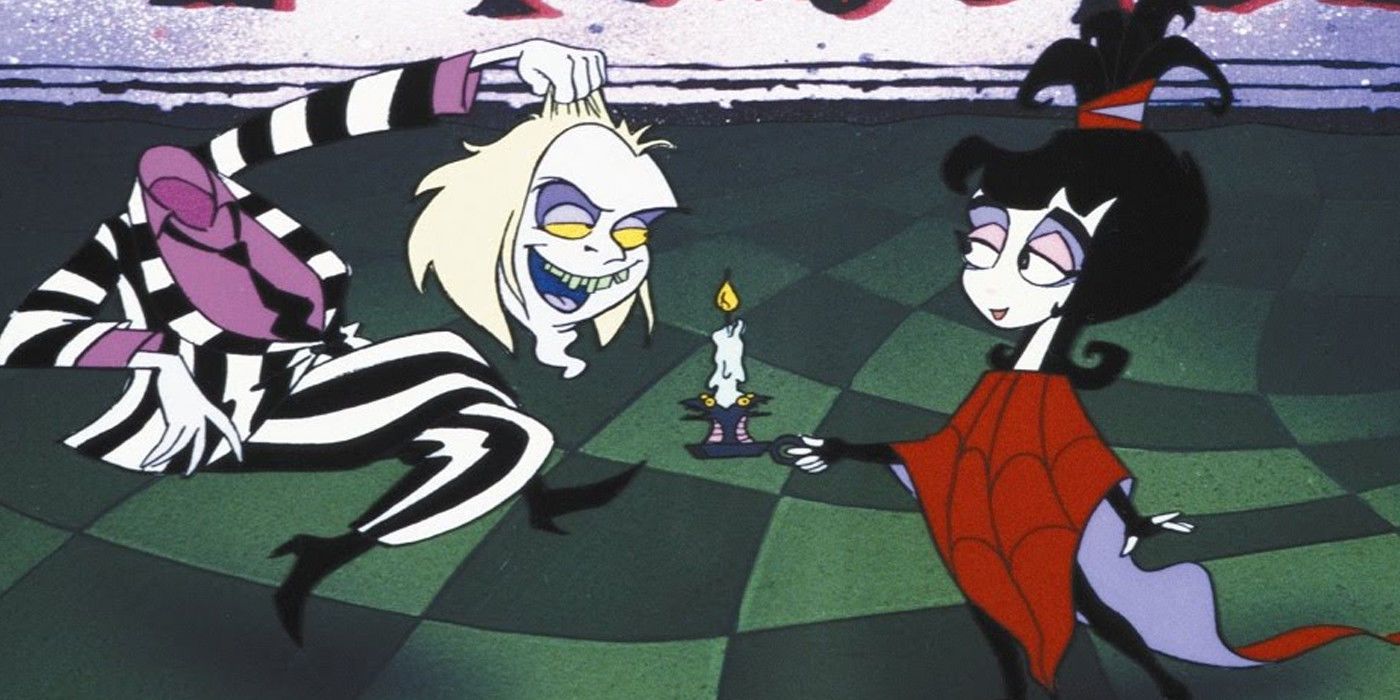
Though this cartoon adaptation of the 1988 cult film was developed and produced by Tim Burton himself, Beetlejuice the animated series went in a different artistic direction. These would include casting Beetlejuice as an anti-hero instead of a villain, and he and Lydia Deetz as best friends who explore the morbid and wacky realm of the Neitherworld together, encountering colorful characters and misadventures.
The show gave the character of Beetlejuice more screentime than the movie, and the world of animation let him use his powers without worrying about movie-level budgeting. Beetlejuice aired on ABC Saturday mornings and Fox on weekday afternoons, proving so successful that it lasted 4 seasons and haunted Nickelodeon and Cartoon Network syndication for years. Unfortunately, the Ghost with the Most now seems largely forgotten.
23 ReBoot
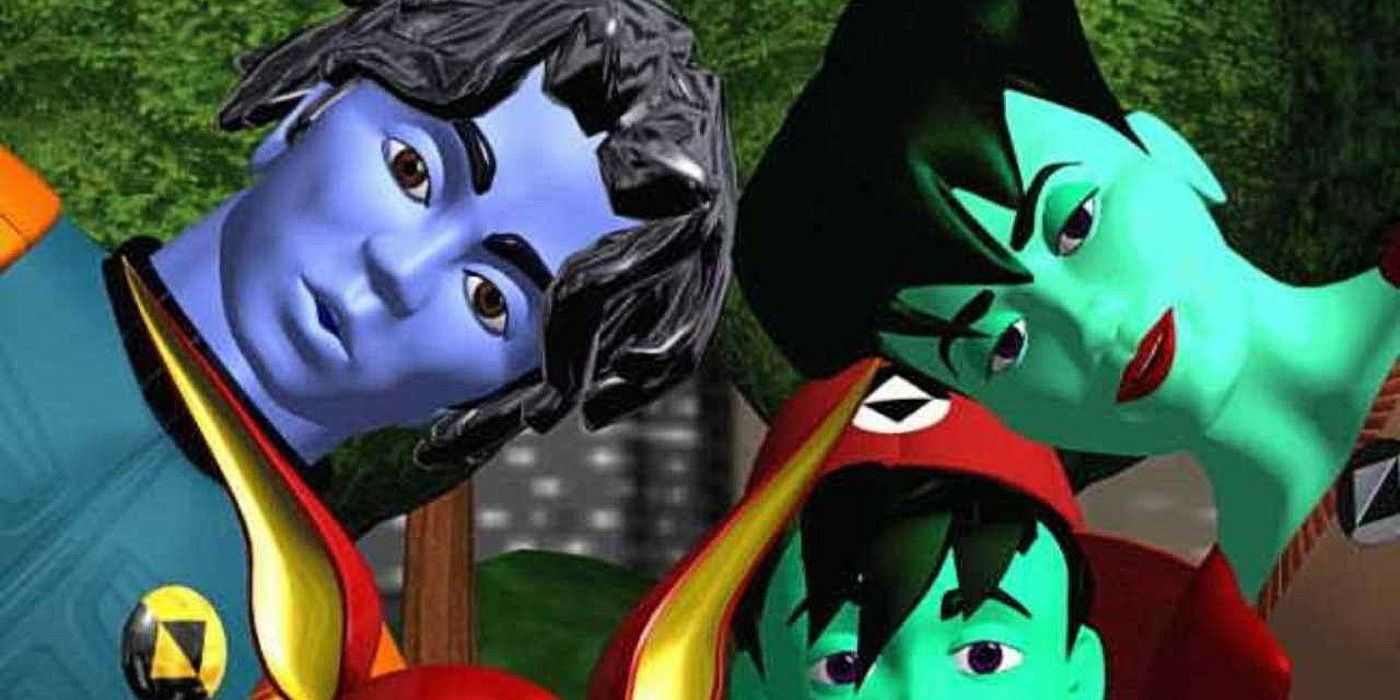
ReBoot was the first completely computer-animated half-hour TV series. Many people watched it, but few seem to remember the adventures of Bob, Enzo, Dot Matrix, Phong, and the other characters of Mainframe. While Toy Story gets all the credit for revolutionizing CGI, ReBoot predated its release by a year and was conceived by the same think-tank responsible for the blocky characters in the music video for Dire Straits' "Money for Nothing," which introduced the world to computer animation.
The Canadian CGI action-adventure featured the citizens of Mainframe (in reality, the personal computer of an unnamed user) defending themselves from attacks by the viruses Megabyte and Hexadecimal. Starting off as a light-hearted affair, it turned darker, gritty, and mature in its third season when the comic relief character Enzo became "Matrix," the anti-hero protagonist of the story, and it started targeting older audiences. ReBoot aired from 1994 to 2001, leaving behind a profound legacy, even if it's seldom talked about.
22 David The Gnome
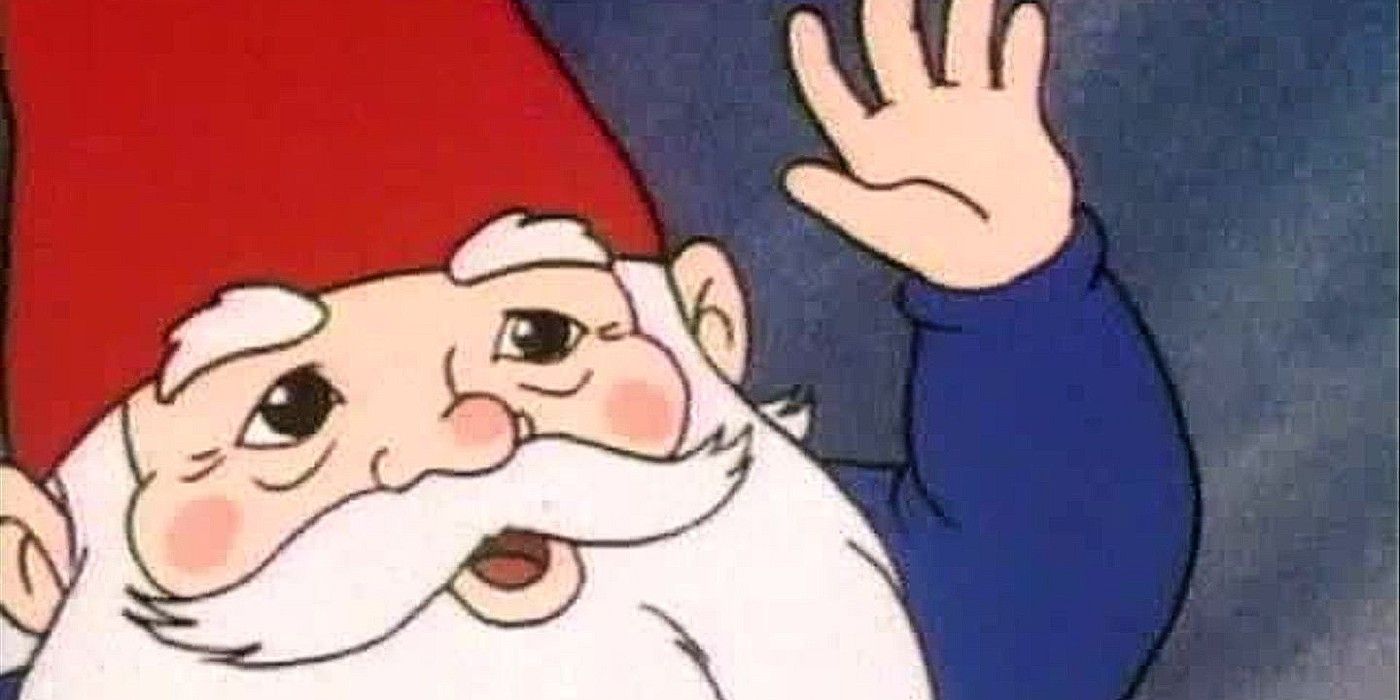
Though it started airing in its home country of Spain in 1985, for many audiences David the Gnome is primarily remembered on TV in the 1990s. David the Gnome was based on a series of books about the lives of Gnomes designed for children. It was a surprise worldwide hit, including in the United States, UK, and Australia. Though the series continued to air on American networks until 2010, many people remember images from David the Gnome, but couldn't name it off the top of their heads.
David the Gnome is well-known for having one of the most emotional endings of any Sunday children's cartoon. In the last episode, David and his wife Lisa go off into the mountains because their "time on the Earth" is almost over (most Gnomes live no more than exactly 400 years). They spend most of the episode saying goodbye to their friends, and then they turn into trees.
21 Road Rovers
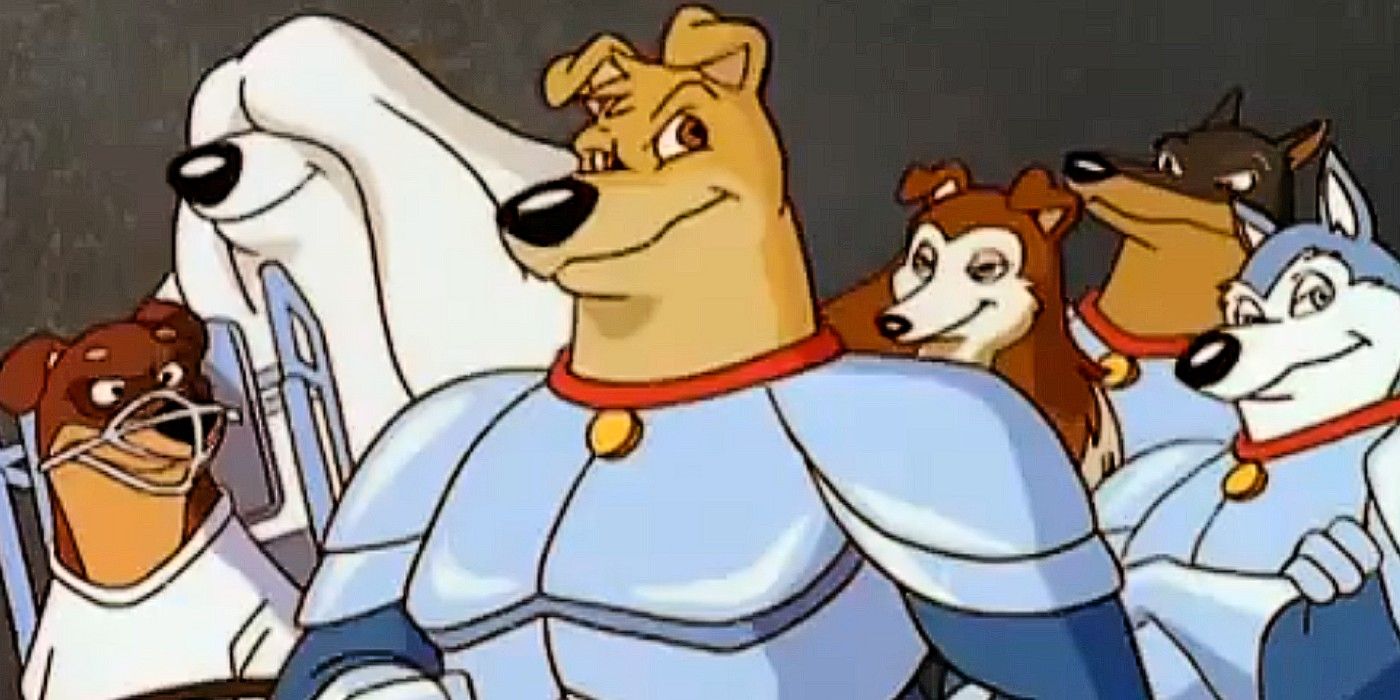
Cartoons in the '90s were fixated on animal action teams. An example of this is Road Rovers, a short-lived series produced by Warner Bros. Animation that aired on the Kids WB channel. The show centred around the adventures of a team of five mutated anthropomorphic animal superheroes. This time the animal of choice is dogs, namely an American Goldador, a British Rough Collie, a Doberman from Germany, a Siberian Husky from Siberia, and a sheepdog from Switzerland.
Road Rovers attempted to put a new twist on an old formula by making the main characters use G.I. Joe-type gadgets and act as the pets of world leaders when not saving the world. However, Rovers failed to make any traction with audiences and was cancelled after one season and 13 episodes.
20 Bucky O'Hare And The Toad Wars
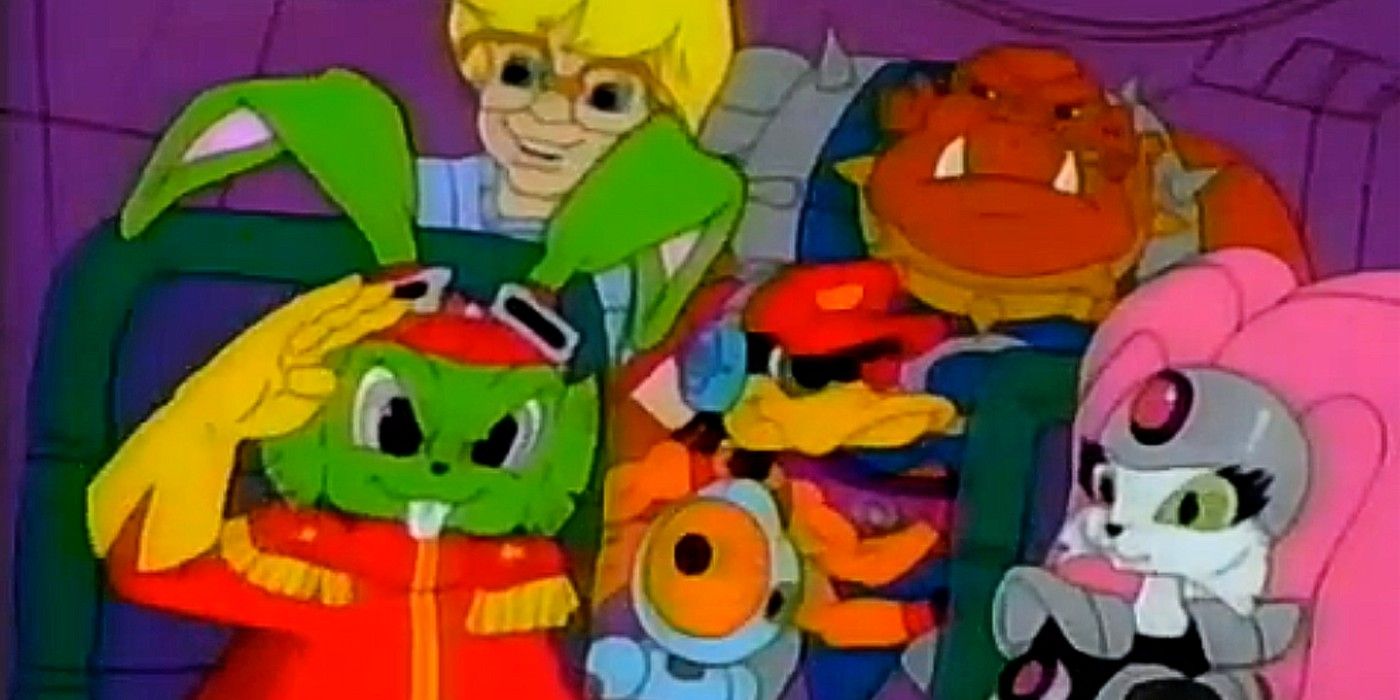
By sheer coincidence, Bucky O'Hare and the Teenage Mutant Ninja Turtles first appeared as comic books in the same month in 1984. But when the time came to adapt Bucky O'Hare for television, a few key elements were borrowed from the TMNT universe. It's clear that Marvel Productions wanted a piece of that sweet, sweet action figure money, and Bucky O'Hare's concept of a mutated rabbit fighting toads in space seemed a guaranteed success.
Still, it would be wrong to dismiss the show as a shallow TMNT rip-off. The French-American animated series Bucky O'Hare and the Toad Wars featured a unique premise that followed the titular character as a member of the Sentient Protoplasm Against Colonial Encroachment, or S.P.A.C.E., as he tries to defend his home planet Warren from invasion by the tyrannical Toad Empire. It ran for only 13 episodes but maintains a cult following. There was even a game for the original NES, and (like most NES games) it was incredibly difficult.
19 Mutant League)
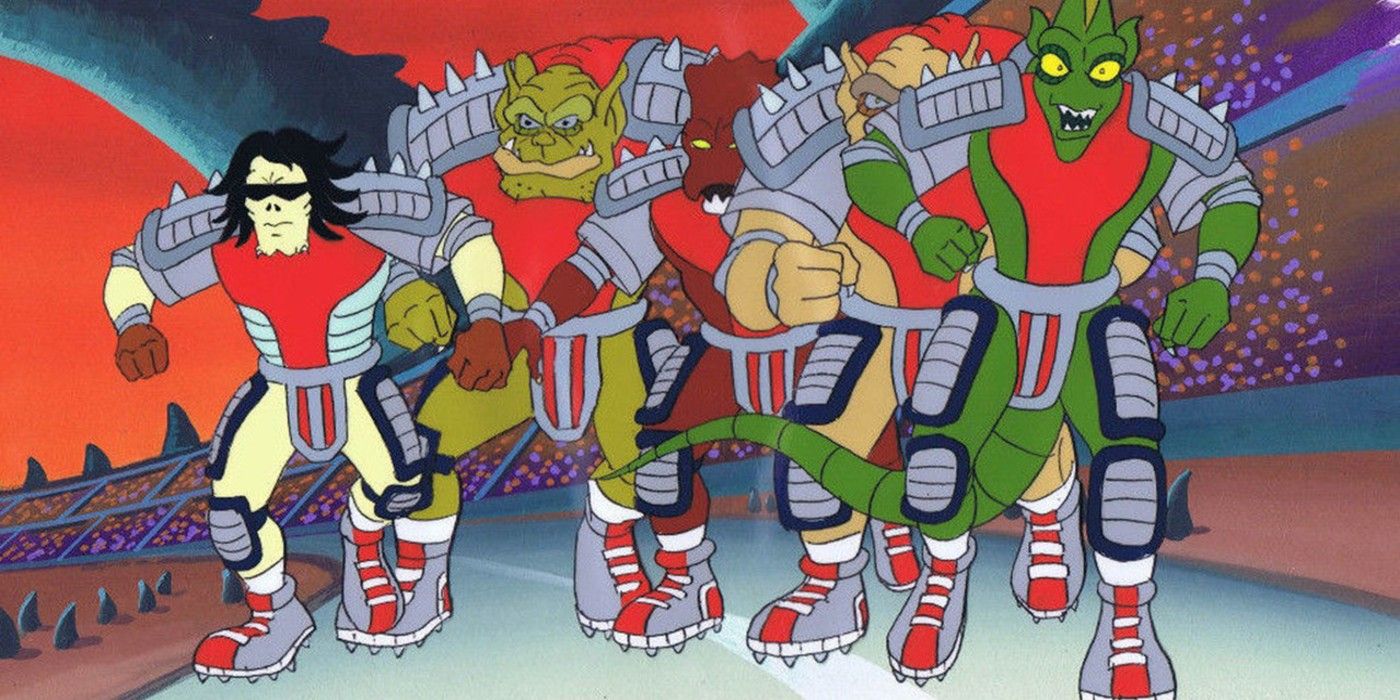
This is one of the more obscure titles on this list. Few people know the Sega Genesis games Mutant League Football and Mutant League Hockey had a cartoon series based on them! It ran for forty episodes across two seasons. Mutant League (the show) ran from 1994 to 1996 and involved protagonist Bones Justice's quest to learn the truth about his father by joining a professional mutant football team called the Midway Monsters.
While the first season was a mess, incorporating a wide variety of plotlines without much regard for continuity (there was an infamous incident where the team has a win streak that ends twice), the second season took a more serious tone. The wild, gory, and cheesy exploits of the pumped-up mutant athletes are nowadays only recalled by adult fans of the games or those who managed to catch a few episodes on TV here and there.
18 The Real Adventures Of Jonny Quest
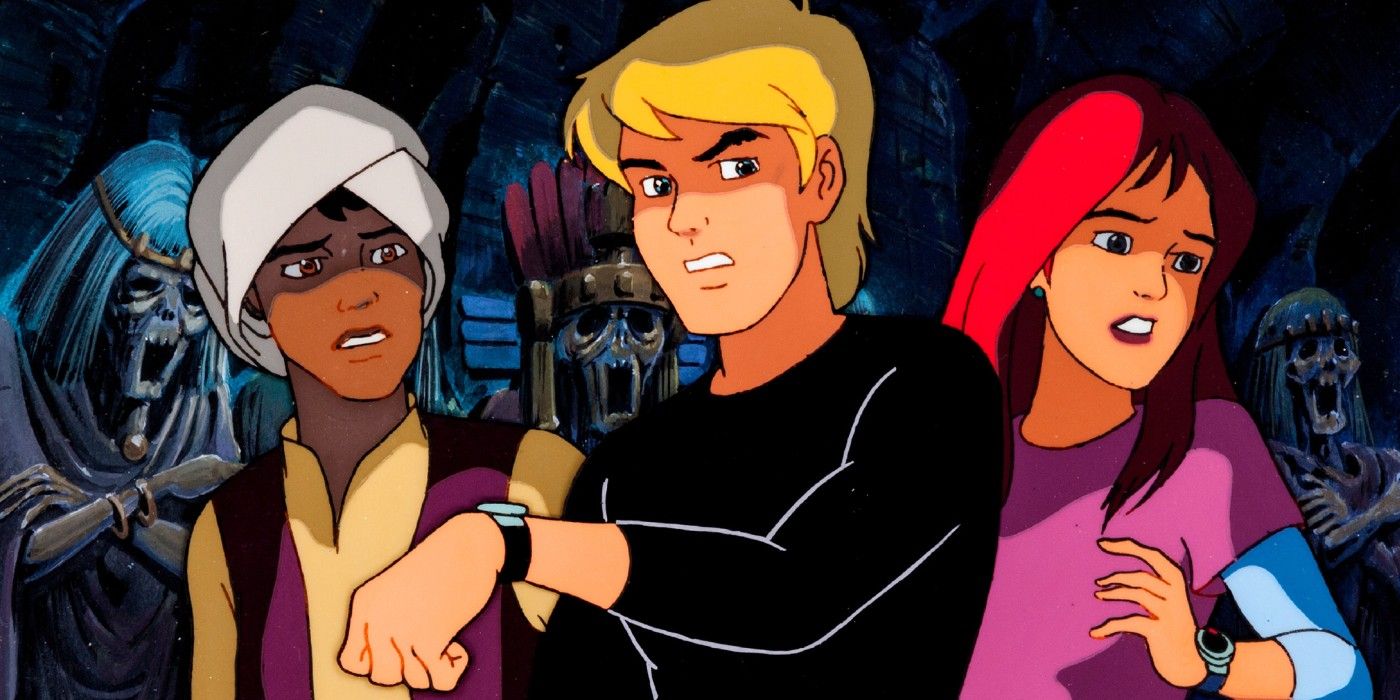
At the time, Cartoon Network's 1990s reimagining of the classic 1960s cartoon Jonny Quest was unique; the show featured teenage versions of Jonny, Jessie, and Hadji and revamped versions of the classic cast tackling real-world mysteries, legends, and paranormal events. It was kinda like an X-Files for teenagers. At its peak, The Real Adventures of Jonny Quest aired twenty-one times per week on Cartoon Network, TBS, and TNT.
Real Adventures had all the making of success: it even had a virtual reality cyberspace realm called QuestWorld, years before the Matrix existed. But it ran into trouble when its original creator was dismissed after the first season and the character designs were reworked to be closer to the original versions. The show's problems also included: being criticized as being too intense for kids, failing to gain traction with its target demographic, and its merchandise failing to sell. Real Adventures was a bold experiment, but was cancelled after two seasons and 52 episodes.
17 KaBlam!
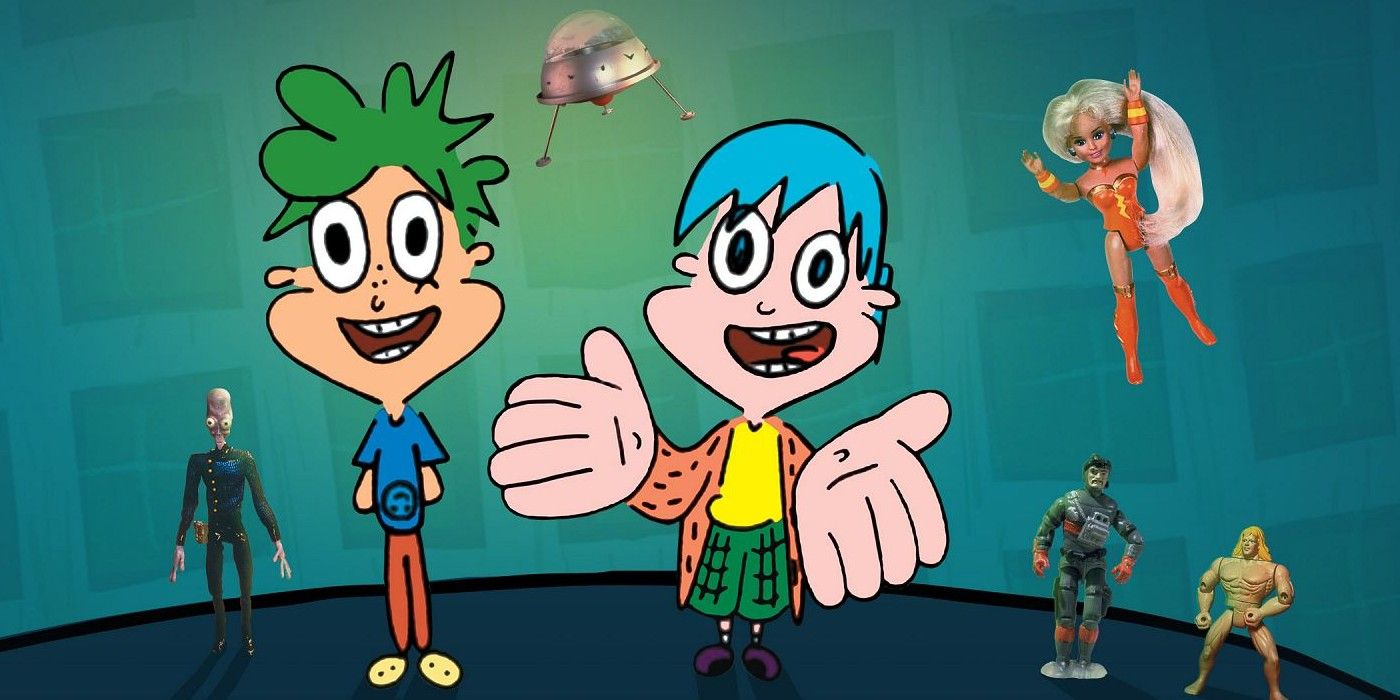
One of the cartoons most associated with the 90s, KaBlam! embraced its weird and off-beat qualities to become a surprise success. A more experimental spin-off of the sketch comedy show All That, KaBlam! was hosted by two cartoon characters named Henry and June and showcased alternative and indie animations like Action League Now!, Prometheus and Bob, Life with Loopy, Sniz & Fondue, and occasionally cartoons like The Off-Beats and Angela Anaconda, all under the slogan, "Where cartoons and comics collide!"
KaBlam! became hugely influential in the decade, but faded with the end of the 90s after its look and attitude became dated. The show was taken off Nickelodeon in 2001 with part of its fourth season and two seasons left unaired, for some signaling the final death of the 90s. Since then, all talks of revival or reboot have failed due to lack of enthusiasm.
16 Ronin Warriors
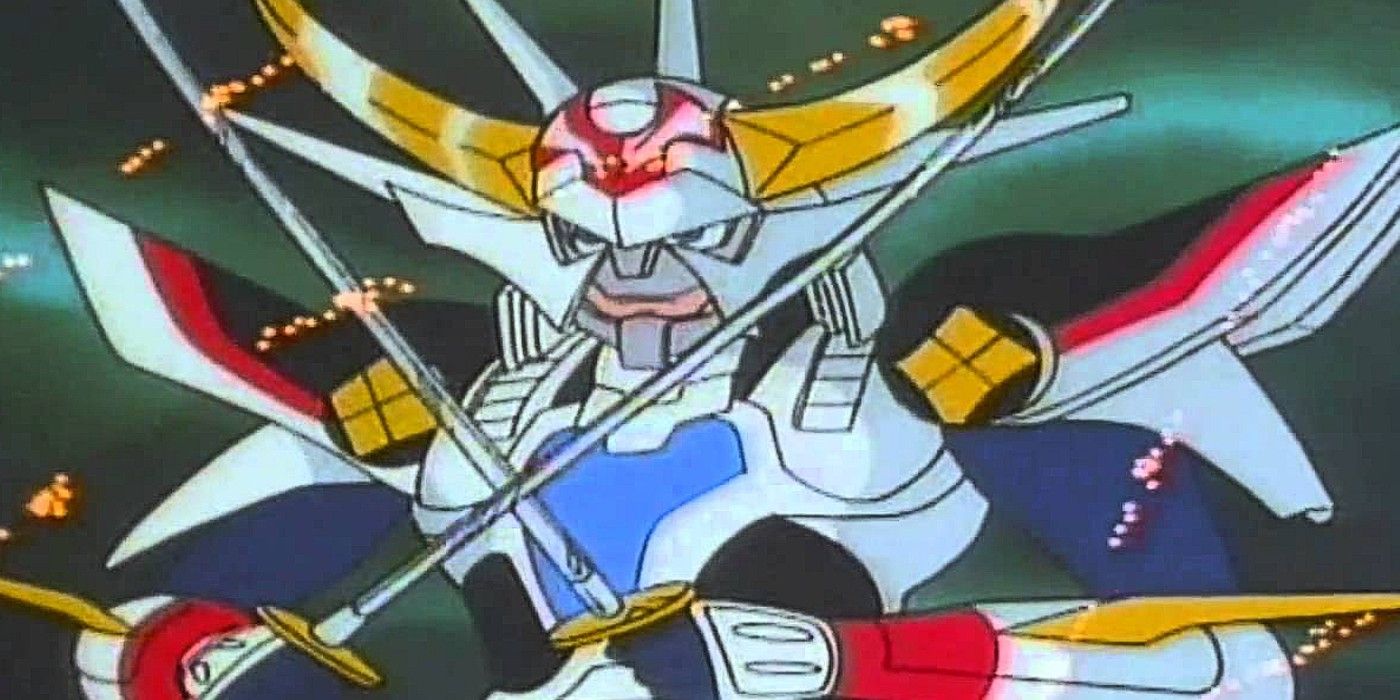
Ronin Warriors was an English dub of the anime Yoroiden Samurai Troopers that first began airing on American television in 1995. Though it didn't get much attention at first, it exploded when it was moved to the Toonami cartoon block in 1999. Ronin Warriors featured five Ronin possessing mystical armor and weapons with elemental powers, all the while being set in the present day. It was similar to a samurai version of the Power Rangers, and showed up at a time when American interest in anime was on the rise.
Of course, looking back on it now, Ronin Warriors hasn't aged any better than its contemporaries in the late 80s/early 90s anime genre, with its dated animation, simplistic plot, and rather flat characters. But it had appeal at the time due to the sheer action and enthusiasm it showed. Ronin Warriors ended its run in 2001, shortly before Gundam Wing and Dragon Ball Z appeared on Toonami and exploded the popularity of anime in the West, making history largely forget the Ronins.
15 Savage Dragon
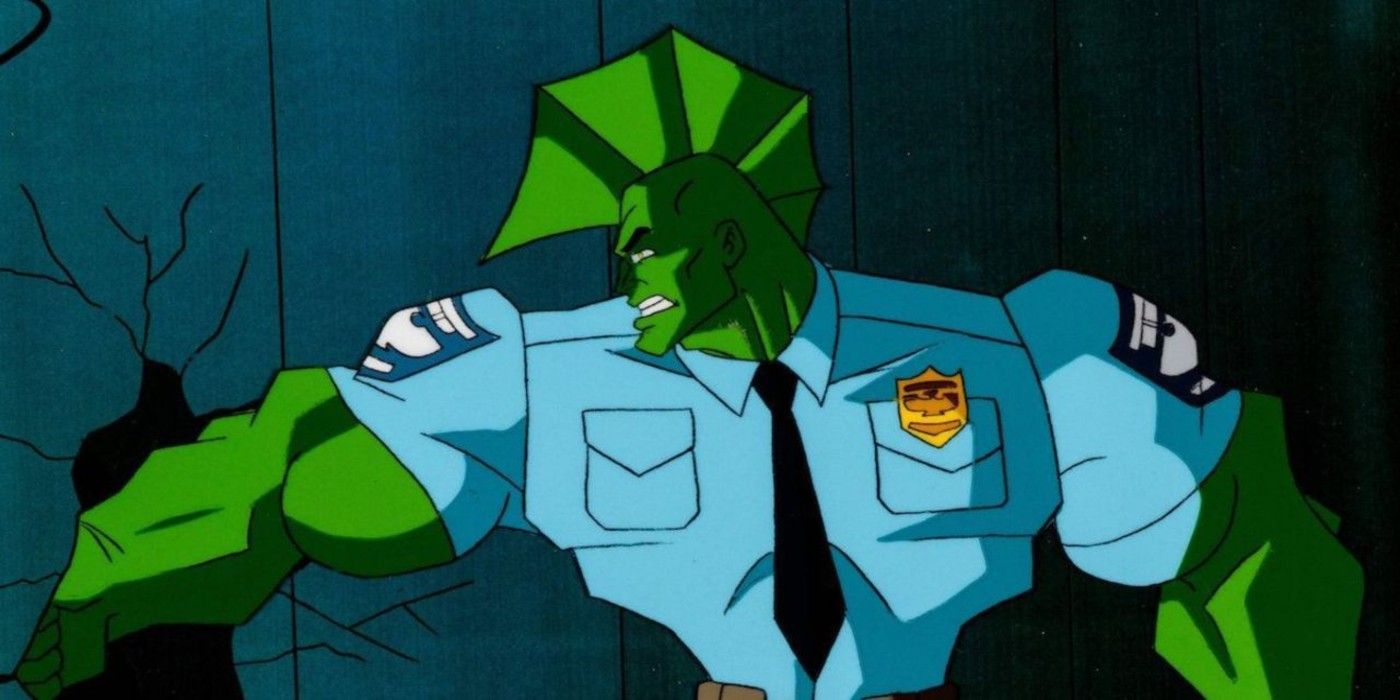
Not many fans of the original Savage Dragon comic books know that there was an animated series in the mid-90s or that it managed to last two seasons. It featured the voice talent of none other than Mark Hamill himself, as well as Jim Cummings, Michael Dorn, Rene Auberjonois, Frank Welker, and Tony Jay.
A surprisingly faithful adaptation, the cartoon Savage Dragontold the story of a mysterious dragon found in the city of Chicago with no memory of who he is or where he comes from. He then joins the police force, using his super strength to save the city. Unlike most other cartoons and comic book adaptations of the time, Savage Dragon wasn't plagued by the campier aspects of the 90s like bad animation or a cheesy theme song. It only lasted two seasons, but the few who got to see the show remember it fondly.
14 Street Sharks
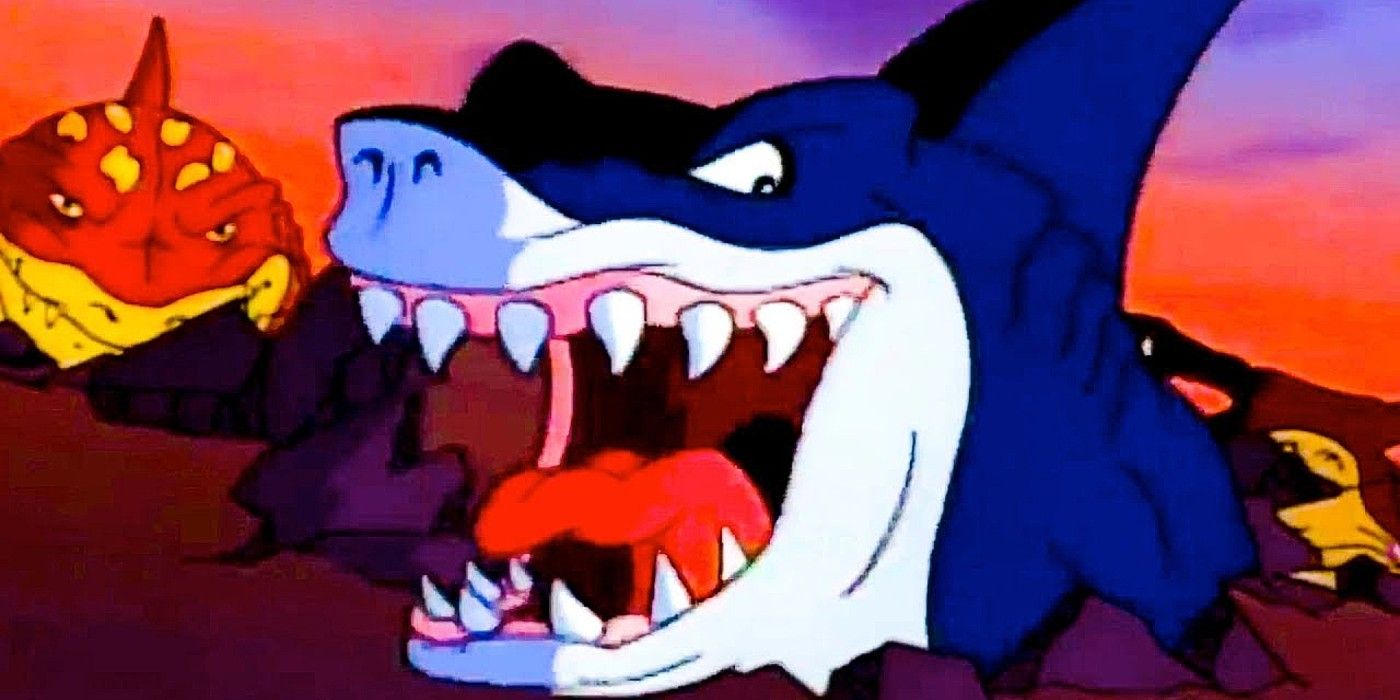
Street Sharks was a bizarre action/comedy series about four brothers (Ripster, Jab, Streex, and Slammu) who mutate into massive, muscular, half-men half-sharks after being exposed to a machine called "the gene-slammer." They spend their time fighting a mad scientist named Dr. Paradigm and his monstrous creations.
Street Sharks lasted for 40 episodes from 1994 to 1995. These days it's remembered more as an example of cheesy 90s pop culture than anything else, which makes sense considering it was created to promote the existing Mattel toy line of the same name. But hey, at least a young Vin Diesel was a hype man for it, so that's got to count for something.
13 Life With Louie
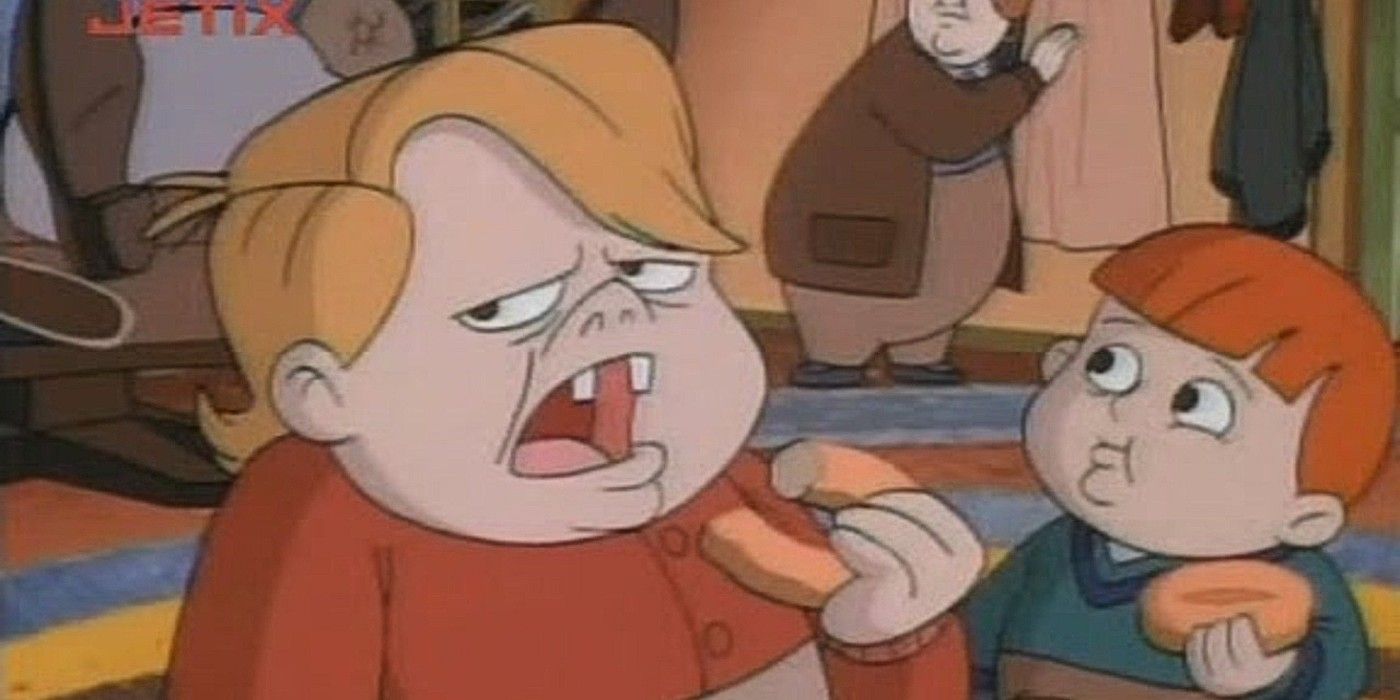
While stand-up comedians Jerry Seinfeld, Ray Romano, Drew Carey, and Tim Allen all had their own live-action sitcoms in the 90s, it was Louie Anderson who did his own cartoon.
Unlike other animated TV shows of the time that embraced fantasy and wacky fictional adventures, Life with Louie was about events from Anderson's own childhood combined with material from his own stand-up. Topics of choice for episodes ranged from Anderson's 10 siblings, family antics with his homemaker mother and loud but loving World War II veteran father, and stories about growing up.
Anderson was so invested in the project he began each episode with a live-action monologue about the theme of the week. Though the show lasted less than 40 episodes, Life with Louie was a surprise hit at the time on Fox, airing Saturday mornings and winning two Daytime Emmy Awards.
12 Gargoyles
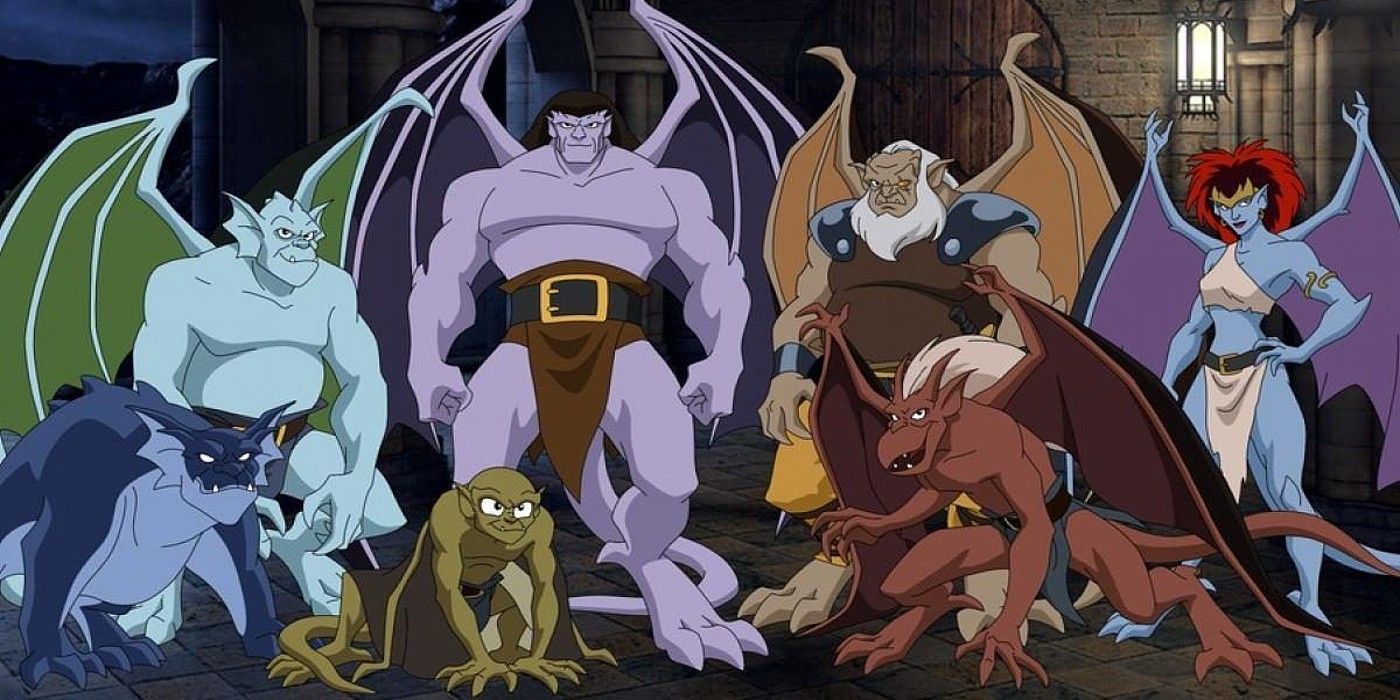
Gargoyles is one of those cartoons that many saw growing up in the 90s, but it rarely gets mentioned these days despite being influential in pop culture. Running from 1994 to 1997, in many ways Gargoyles was ahead of its time. It was dark, it was clever, it had complex and well-developed characters, and the plots were surprisingly adult for a kids' cartoon, including Shakespearian references, Arthurian and Scottish legend, mythology, and more modern issues like firearm safety and racial prejudice.
It also helps that the villain, David Xanatos, gained such a reputation as a symbol for Machiavellian planning that he actually has a type of planning named after it, the Xanatos Gambit, or a plan in which all possible outcomes benefit the planner. Gargoyles ran from 1994 to 1997 and is fondly remembered by many, but it simply doesn't get enough credit for changing how cartoons were made.
11 Dog City
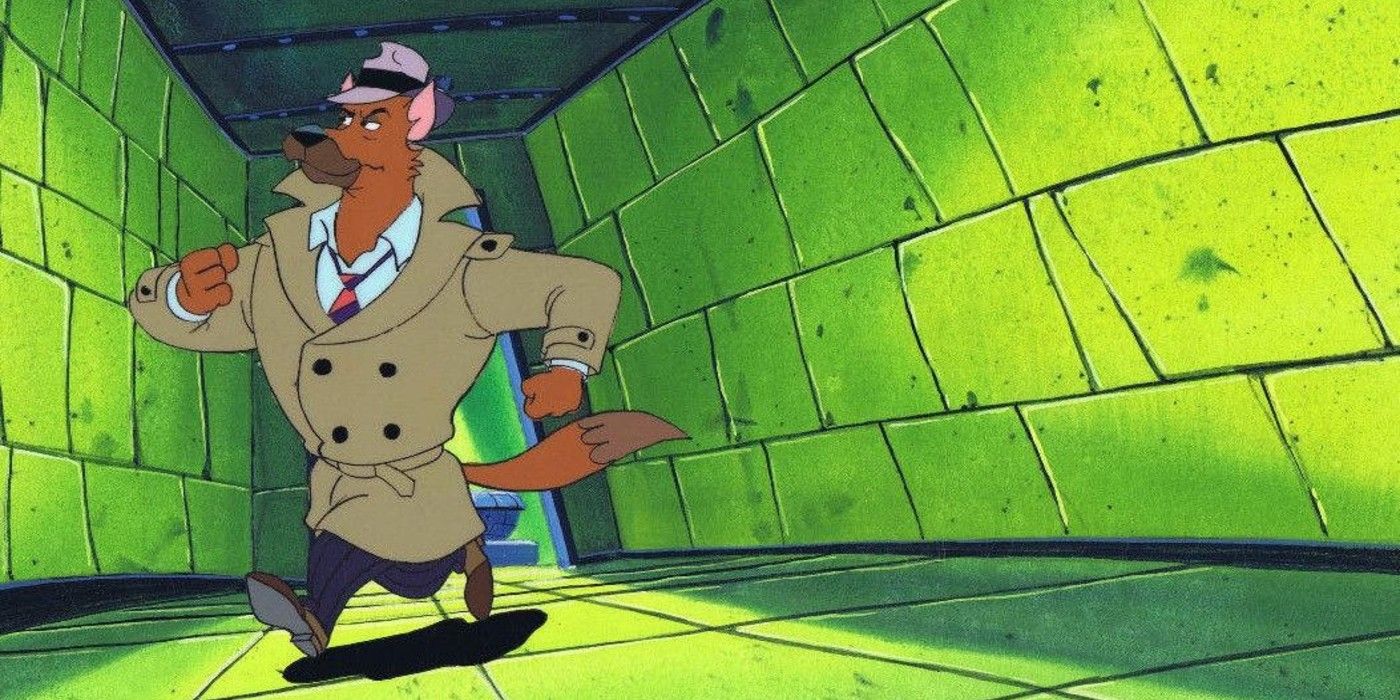
This bizarre but effective creation was not only a mash-up between Muppet and cartoon segments, but also combined two popular ideas: hard-boiled detective noir and dogs. The result was Dog City, a show focused around the adventures of canine private investigator Ace Hart, a German Shepard raised by Chinese Pekingese parents, as he tries to protect Dog City from bulldog and mob leader Bugsy Vile.
The cartoon elements by Nelvana Limited showed Ace Hart as the drawing of animator Eliot Shag, the protagonist of the Muppet sections by Jim Henson Productions, seamlessly blending the world of the two halves of the show. Receiving generally positive reviews from critics and audiences, Dog City was praised for the idea of a cartoon and its animator conversing and having parallel plots in the cartoon and "real" world.
Source: https://www.thegamer.com/obscure-90s-cartoons/
0 Response to "Funny Cartoon Black an Standing Next to a Boat Speaking With His Friend"
Post a Comment